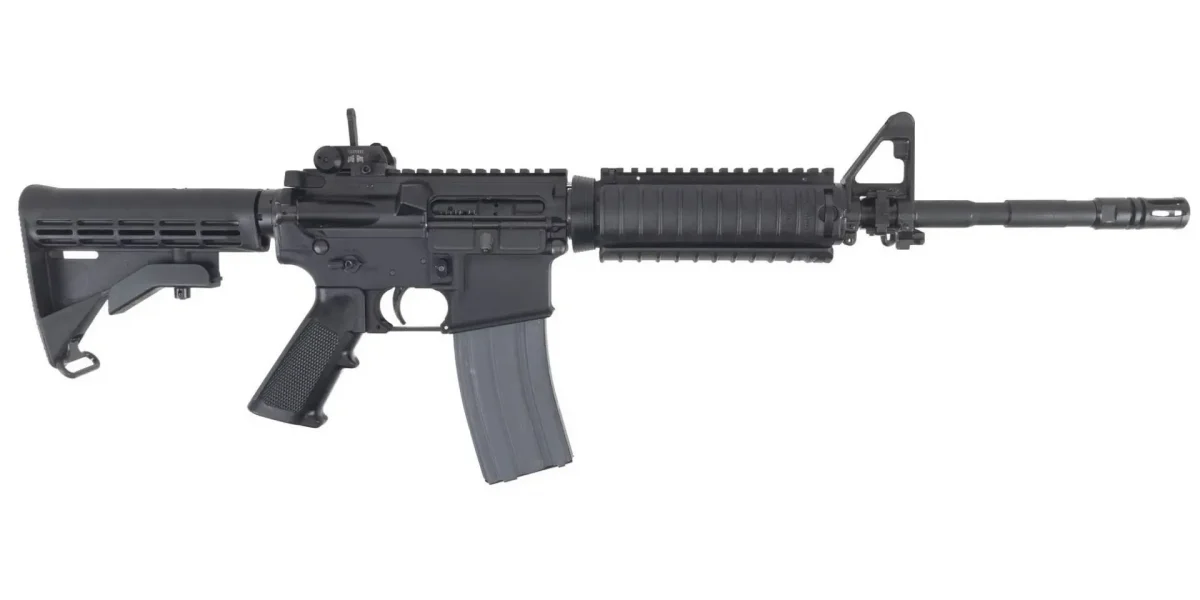“The M4 Carbine are lightweight, gas-operated, air-cooled, magazine-fed,
shoulder-fired weapons that fire in automatic, semi-automatic, or (three-round) burst.”
-Army TM 9-1005-319-10
This description was drilled into my mind when I first arrived at my duty station by
my squad leader and handed my first issued carbine. The carbine was a Colt M4
Carbine with Eotech 552 Holographic Weapon Sight (HWS), Knights Armament RAS
handguard, Insight M3X tactical light and AN/PAQ-4 Infrared laser system. This would
change over the years from a Colt M4 to an M4A1 variant, along with accessories. The
rifle I use now is quite different from what I was first issued with leaps and bounds in
advancements since the early 2000’s. With 36 months of this daily carrying, living with,
and putting the carbine to use in austere environments it has given me a steadfast
opinion of the how and why I set my rifles up.
Rifle:
I will always look for manufactures with specifications that meet or exceed the
Technical Data Package (TDP) of the rifles I was issued. Hard use will require attention
to detail and quality components. At the end of the day, or when called upon, there
should be no question of whether it will work or not.
My personal set up is a Bravo Company complete lower receiver with a Geissele
10.3” URG-I upper receiver assembly. This is a fantastic rifle that I have no doubt about
its reliability or hard use.
Optic:
I use and recommend the Aimpoint and Eotech products as my preference is to
red dots. The Aimpoint T2 series is my go-to for its light weight, durability, long battery
life and simplicity. Combined with a 3x magnifier you extend its range for less weight
than a Low Power Variable Optic (LPVO), with the benefit of removing and stowing it if
it’s not needed. The only difficulty that you will face is selecting what zero distance (50,
25/300, 36, or 100 yards), they all have their advantages and disadvantages. Select
one, verify at distance and then learn your holds for your selected ammunition.
Light:
Surefire weapon lights, I have a long history with them and with the 1,000 lumens
it is a huge improvement from where I started. What I use and recommend are the
Scout series of lights, with the Pro models offering both picatinny and M-LOK (sorry
keymod guys) mounting in the package and adjustability it cannot be beat. Surefire is
one of the “OGs” of the game and there is not anything comparable.
Sling:
The three options for slings: single point, two point and three point. I recommend
the two point and I will explain.
If you ever used a three point sling then the memories of them causing you to
become entangled or the lack of modularity speaks for itself, if you have not then the
21 st century is calling you from the 90’s. They lived a semi-good life and then faded into
the obscurity that they deserved.
Single point, while a viable option for select use cases, they have the distinct
disadvantages of hanging everywhere you don’t need it to be, always swings if you
don’t have positive control, and if you have to stow it on your person and take a knee
then your barrel is going into the dirt.
Two point, adjustable slings, offer only positive retention on the person, versatility
when switching shoulders, tension for un-stabilized firing positions and a host of
reasons to go with them. Blue Force Gear Vicker’s or Viking Tactics VTAC slings are my
go-to.
Magazines:
Buy quality, Magpul or USGI, not much more to say about it. Maintain them with
occasional wipe downs and know when to get rid of them. Unlike the military’s thinking
they are a disposable item and have a service life.
If you have been picking up what I have been putting down, the basics for a
fighting carbine will be the Rifle, Optic, Light and Sling. These are the bare minimums
that you should get if you are setting up a rifle or carbine for self-defense. A suppressor
is nice if you would like to save your hearing, but not an absolute necessity. Choose
quality manufactures like BCM, Daniel Defense, LMT, Surefire, HUXWRX, Aimpoint,
Eotech or our own Rainier Arms products and firearms and life will be much easier.
As always, if you are looking to get a rifle set up with any of the manufacturers
discussed, stop on down at Rainier Arms Firearms Academy and we will get you set up
as life is about pursuing your passions!
Rainier Arms Firearms Training home: RAFA
RAFA: Visit us or drop us a line.
Take a look at the RAFA calendar of training.
Enroll in a RAFA shooting class.
Follow RAFA on Instagram: @rainierarmsfirearmsacademy.
Connect on Facebook: /rainierarmsfirearmsacademy/
Find RAFA on Twitter: @rainieracademy
Subscribe to the RAFA channel on YouTube: Rainier Media Haus



